Wind and PV Power Consumption Strategy Based on Demand Response: A Model for Assessing User Response Potential Considering Differentiated Incentives
Abstract
:1. Introduction
2. Analysis of DR Mechanism Issues
2.1. Analyzing the Process for Selecting Participating Users
2.2. Analysis of the Methodology for Determining Subsidy Price
3. User DR Potential Prediction Model
3.1. RF Principle
- Choose features at random from a pool of features; each sample’s feature dimension is , where is less than .
- Use the bootstrap method to perform repeated sampling on the training sample set , generating training subsets () of samples [35]. Out-of-bag (OOB) datasets are samples from the training sample set that do not appear in the subset being trained. OOB data make up roughly 36.8% of the training sample set [36].
- Create decision trees specifically for the training subset response quantities and obtain the RF model made up of decision trees.
3.2. Feature Selection-Based Feature Variable Screening
3.3. An RF-Based Model for Evaluating User Response Potential
- Select candidate input variables
- 2.
- Select important variables as input variables
- 3.
- Create an RF prediction model
- 4.
- Search for the optimal parameter combination of the model
4. Differentiated Subsidy Price
4.1. Differentiated Subsidy Price Formula
4.2. Constraint Conditions on the Subsidy Price Formula
4.2.1. Constraint Condition on the Rate of Change of Response Quantity
4.2.2. Maximum Subsidy Price Constraint Condition
4.2.3. Total Subsidy Costs Constraint Condition
- Benefits of WPVP consumption
- 2.
- Climbing costs for thermal power units
- 3.
- DR subsidy costs
5. Model Effectiveness Evaluation Indicator System
6. Example Analysis
6.1. Data Sources
6.2. RF Modeling
6.3. Analysis of WPVP Consumption
6.4. An Analysis of the Effectiveness of DR Strategy
7. Conclusions
Author Contributions
Funding
Institutional Review Board Statement
Informed Consent Statement
Data Availability Statement
Conflicts of Interest
Nomenclature
| PV | Photovoltaic | NLC | Number learning cycles |
| WPVP | Wind and photovoltaic power | MLS | Minimum leaf size |
| DR | Demand response | RMSE | Root mean square error |
| CV | Characteristic variables | EUR | Energy utilization rate |
| OOB | Out of bag | NLSD | Net load standard deviation |
| RF | Random forest | PVD | Peak-valley difference |
| CART | Categorical And regression trees | PEC | Peak electricity consumption |
| PCPUO | Power consumption per unit of output |
References
- National Energy Administration. Presentation of Renewable Energy Grid Connected Operations in 2018. Available online: http://www.nea.gov.cn/2019-01/28/c_137780519.htm (accessed on 14 July 2023).
- National Energy Administration. National Energy Administration Releases National Electric Power Industry Statistics for January-September. Available online: http://www.nea.gov.cn/202210/24/c_1310670890.htm (accessed on 14 July 2023).
- Wang, Q.; Chang, P.; Bai, R.; Liu, W.; Dai, J.; Tang, Y. Mitigation Strategy for Duck Curve in High Photovoltaic Penetration Power System Using Concentrating Solar Power Station. Energies 2019, 12, 3521. [Google Scholar] [CrossRef]
- Li, W.; Dong, F.; Ji, Z.; Ji, L. Evaluation of Provincial Power Supply Reliability with High Penetration of Renewable Energy Based on Combination Weighting of Game Theory-TOPSIS Method. Sustain. Energy Grids Netw. 2023, 35, 101092. [Google Scholar] [CrossRef]
- Zhang, G.; Niu, Y.; Xie, T.; Zhang, K. Multi-Level Distributed Demand Response Study for a Multi-Park Integrated Energy System. Energy Rep. 2023, 9, 2676–2689. [Google Scholar] [CrossRef]
- Leherbauer, D.; Hehenberger, P. Physics-Based Modeling and Parameter Tracing for Industrial Demand-Side Management Applications: A Novel Approach. Sustainability 2024, 16, 1995. [Google Scholar] [CrossRef]
- Yan, Q.; Lin, H.; Zhang, M.; Ai, X.; Gejirifu, D.; Li, J. Two-Stage Flexible Power Sales Optimization for Electricity Retailers Considering Demand Response Strategies of Multi-Type Users. Int. J. Electr. Power Energy Syst. 2022, 137, 107031. [Google Scholar] [CrossRef]
- Jiangsu Provincial Development and Reform Commission. Regarding the public solicitation of the Implementation Rules for Jiangsu Province’s Electricity Demand Response. Available online: https://fzggw.jiangsu.gov.cn/art/2022/10/24/art_284_10637935.html (accessed on 14 July 2023).
- Cai, Q.; Xu, Q.; Qing, J.; Shi, G.; Liang, Q.-M. Promoting Wind and Photovoltaics Renewable Energy Integration through Demand Response: Dynamic Pricing Mechanism Design and Economic Analysis for Smart Residential Communities. Energy 2022, 261, 125293. [Google Scholar] [CrossRef]
- Fan, S.; Li, Z.; Yang, L.; He, G. Customer Directrix Load-Based Large-Scale Demand Response for Integrating Renewable Energy Sources. Electr. Power Syst. Res. 2020, 181, 106175. [Google Scholar] [CrossRef]
- Xu, H.; Chang, Y.; Zhao, Y.; Wang, F. A New Multi-Timescale Optimal Scheduling Model Considering Wind Power Uncertainty and Demand Response. Int. J. Electr. Power Energy Syst. 2023, 147, 108832. [Google Scholar] [CrossRef]
- Zhao, X.; Bai, Z.; Xue, W.; Xu, N.; Li, C.; Zhao, H. Research on Bi-Level Cooperative Robust Planning of Distributed Renewable Energy in Distribution Networks Considering Demand Response and Uncertainty. Energy Rep. 2021, 7, 1025–1037. [Google Scholar] [CrossRef]
- Cai, T.; Dong, M.; Liu, H.; Nojavan, S. Integration of Hydrogen Storage System and Wind Generation in Power Systems under Demand Response Program: A Novel p-Robust Stochastic Programming. Int. J. Hydrogen Energy 2022, 47, 443–458. [Google Scholar] [CrossRef]
- Dai, X.; Li, Y.; Zhang, K.; Feng, W. A Robust Offering Strategy for Wind Producers Considering Uncertainties of Demand Response and Wind Power. Appl. Energy 2020, 279, 115742. [Google Scholar] [CrossRef]
- Lu, X.; Ge, X.; Li, K.; Wang, F.; Shen, H.; Tao, P.; Hu, J.; Lai, J.; Zhen, Z.; Shafie-khah, M.; et al. Optimal Bidding Strategy of Demand Response Aggregator Based On Customers’ Responsiveness Behaviors Modeling Under Different Incentives. IEEE Trans. Ind. Appl. 2021, 57, 3329–3340. [Google Scholar] [CrossRef]
- Baharlouei, Z.; Hashemi, M.; Narimani, H.; Mohsenian-Rad, H. Achieving Optimality and Fairness in Autonomous Demand Response: Benchmarks and Billing Mechanisms. IEEE Trans. Smart Grid 2013, 4, 968–975. [Google Scholar] [CrossRef]
- Baharlouei, Z.; Hashemi, M. Efficiency-Fairness Trade-off in Privacy-Preserving Autonomous Demand Side Management. IEEE Trans. Smart Grid 2014, 5, 799–808. [Google Scholar] [CrossRef]
- Liu, D.; Qin, Z.; Hua, H.; Ding, Y.; Cao, J. Incremental Incentive Mechanism Design for Diversified Consumers in Demand Response. Appl. Energy 2023, 329, 120240. [Google Scholar] [CrossRef]
- Hamidpour, H.; Aghaei, J.; Dehghan, S.; Pirouzi, S.; Niknam, T. Integrated Resource Expansion Planning of Wind Integrated Power Systems Considering Demand Response Programmes. IET Renew. Power Gener. 2019, 13, 519–529. [Google Scholar] [CrossRef]
- Lishui Development and Reform Commission. Announcement on Special Market Trial Operation Response Subsidies for Power Load Response. Available online: http://fgw.lishui.gov.cn/art/2021/10/9/art_1229228449_4749295.html (accessed on 1 April 2024).
- Pang, Y.; He, Y.; Jiao, J.; Cai, H. Power Load Demand Response Potential of Secondary Sectors in China: The Case of Western Inner Mongolia. Energy 2020, 192, 116669. [Google Scholar] [CrossRef]
- Wang, Y.; Li, F.; Yang, J.; Zhou, M.; Song, F.; Zhang, D.; Xue, L.; Zhu, J. Demand Response Evaluation of RIES Based on Improved Matter-Element Extension Model. Energy 2020, 212, 118121. [Google Scholar] [CrossRef]
- Wang, T.; Wang, J.; Zhao, Y.; Shu, J.; Chen, J. Multi-Objective Residential Load Dispatch Based on Comprehensive Demand Response Potential and Multi-Dimensional User Comfort. Electr. Power Syst. Res. 2023, 220, 109331. [Google Scholar] [CrossRef]
- Giannelos, S.; Konstantelos, I.; Strbac, G. Option Value of Demand-Side Response Schemes Under Decision-Dependent Uncertainty. IEEE Trans. Power Syst. 2018, 33, 5103–5113. [Google Scholar] [CrossRef]
- Shi, R.; Jiao, Z. Individual Household Demand Response Potential Evaluation and Identification Based on Machine Learning Algorithms. Energy 2023, 266, 126505. [Google Scholar] [CrossRef]
- Kong, X.; Wang, Z.; Liu, C.; Zhang, D.; Gao, H. Refined Peak Shaving Potential Assessment and Differentiated Decision-Making Method for User Load in Virtual Power Plants. Appl. Energy 2023, 334, 120609. [Google Scholar] [CrossRef]
- Shirsat, A.; Tang, W. Quantifying Residential Demand Response Potential Using a Mixture Density Recurrent N-eural Network. Int. J. Electr. Power Energy Syst. 2021, 130, 106853. [Google Scholar] [CrossRef]
- Kong, X.; Kong, D.; Yao, J.; Bai, L.; Xiao, J. Online Pricing of Demand Response Based on Long Short-Term Memory and Reinforcement Learning. Appl. Energy 2020, 271, 114945. [Google Scholar] [CrossRef]
- Zhang, Y.; Ai, Q.; Li, Z. ADMM-based Distributed Response Quantity Estimation: A Probabilistic Perspective. IET Gener. Transm. Distrib. 2020, 14, 6594–6602. [Google Scholar] [CrossRef]
- Zhejiang Provincial Development And Reform Commission. Notice of Electricity Demand Response for 2021. Available online: https://fzggw.zj.gov.cn/art/2021/6/8/art_1229629046_4906648.html (accessed on 14 July 2023).
- North Star Power Grid. Chongqing Grid Demand Response Implementation Program in 2022 (Trial). Available online: https://news.bjx.com.cn/html/20220518/1225886.shtml (accessed on 14 July 2023).
- Leinauer, C.; Schott, P.; Fridgen, G.; Keller, R.; Ollig, P.; Weibelzahl, M. Obstacles to Demand Response: Why Industrial Companies Do Not Adapt Their Power Consumption to Volatile Power Generation. Energy Policy 2022, 165, 112876. [Google Scholar] [CrossRef]
- Monfared, H.J.; Ghasemi, A.; Loni, A.; Marzband, M. A Hybrid Price-Based Demand Response Program for the Residential Micro-Grid. Energy 2019, 185, 274–285. [Google Scholar] [CrossRef]
- Shi, W.; Ma, X.; Min, Y.; Yang, H. Feasibility Analysis of Indirect Evaporative Cooling System Assisted by Liquid Desiccant for Data Centers in Hot-Humid Regions. Sustainability 2024, 16, 2011. [Google Scholar] [CrossRef]
- Karabadji, N.E.I.; Amara Korba, A.; Assi, A.; Seridi, H.; Aridhi, S.; Dhifli, W. Accuracy and Diversity-Aware Multi-Objective Approach for Random Forest Construction. Expert Syst. Appl. 2023, 225, 120138. [Google Scholar] [CrossRef]
- Zhou, Z. Machine Learning; Tsinghua University Press: Beijing, China, 2016; pp. 171–180. [Google Scholar]
- Wohlfarth, K.; Klobasa, M.; Gutknecht, R. Demand Response in the Service Sector—Theoretical, Technical and Practical Potentials. Appl. Energy 2020, 258, 114089. [Google Scholar] [CrossRef]
- Inan, O. A Method of Classification Performance Improvement Via a Strategy of Clustering-Based Data Elimination Integrated with k-Fold Cross-Validation. Arab. J. Sci. Eng. 2021, 46, 1199–1212. [Google Scholar] [CrossRef]
- Sun, Y.; Ding, S.; Zhang, Z.; Jia, W. An Improved Grid Search Algorithm to Optimize SVR for Prediction. Soft Comput. 2021, 25, 5633–5644. [Google Scholar] [CrossRef]
- Pradhan, V.; Murthy Balijepalli, V.S.K.; Khaparde, S.A. An Effective Model for Demand Response Management Systems of Residential Electricity Consumers. IEEE Syst. J. 2016, 10, 434–445. [Google Scholar] [CrossRef]
- National Energy Administration. Notice on Establishing and Improving the Renewable Energy Electricity Consumption Guarantee Mechanism. Available online: https://www.gov.cn/zhengce/zhengceku/2019-09/25/content_5432993.htm (accessed on 14 July 2023).
- Tan, Z.; Ju, L.; Reed, B.; Rao, R.; Peng, D.; Li, H.; Pan, G. The Optimization Model for Multi-Type Customers Assisting Wind Power Consumptive Considering Uncertainty and Demand Response Based on Robust Stochastic Theory. Energy Convers. Manag. 2015, 105, 1070–1081. [Google Scholar] [CrossRef]
- Oak Ridge National Lab. 2013; Assessment of Industrial Load for Demand Response across U.S. Regions of the Western Interconnect. Available online: https://info.ornl.gov/sites/publications/files/Pub45942.pdf (accessed on 14 July 2023).
- Elia Transmission Belgium SA. Solar Power Generation. Elia. Available online: https://www.elia.be/en/grid-data/power-generation/solar-pv-power-generation-data (accessed on 14 July 2023).
- Elia Transmission Belgium SA. Wind Power Generation. Elia. Available online: https://www.elia.be/en/grid-data/power-generation/wind-power-generation?csrt=9625836695571506098 (accessed on 14 July 2023).
- Omar, N.; Aly, H.; Little, T. Optimized Feature Selection Based on a Least-Redundant and Highest-Relevant Framework for a Solar Irradiance Forecasting Model. IEEE Access 2022, 10, 48643–48659. [Google Scholar] [CrossRef]
- Wang, Y.; Rui, L.; Ma, J.; Jin, Q. A Short-Term Residential Load Forecasting Scheme Based on the Multiple Correlation-Temporal Graph Neural Networks. Appl. Soft Comput. 2023, 146, 110629. [Google Scholar] [CrossRef]
- Iwafune, Y.; Ogimoto, K.; Kobayashi, Y.; Murai, K. Driving Simulator for Electric Vehicles Using the Markov Chain Monte Carlo Method and Evaluation of the Demand Response Effect in Residential Houses. IEEE Access 2020, 8, 47654–47663. [Google Scholar] [CrossRef]
- Bottaccioli, L.; Di Cataldo, S.; Acquaviva, A.; Patti, E. Realistic Multi-Scale Modeling of Household Electricity Behaviors. IEEE Access 2019, 7, 2467–2489. [Google Scholar] [CrossRef]
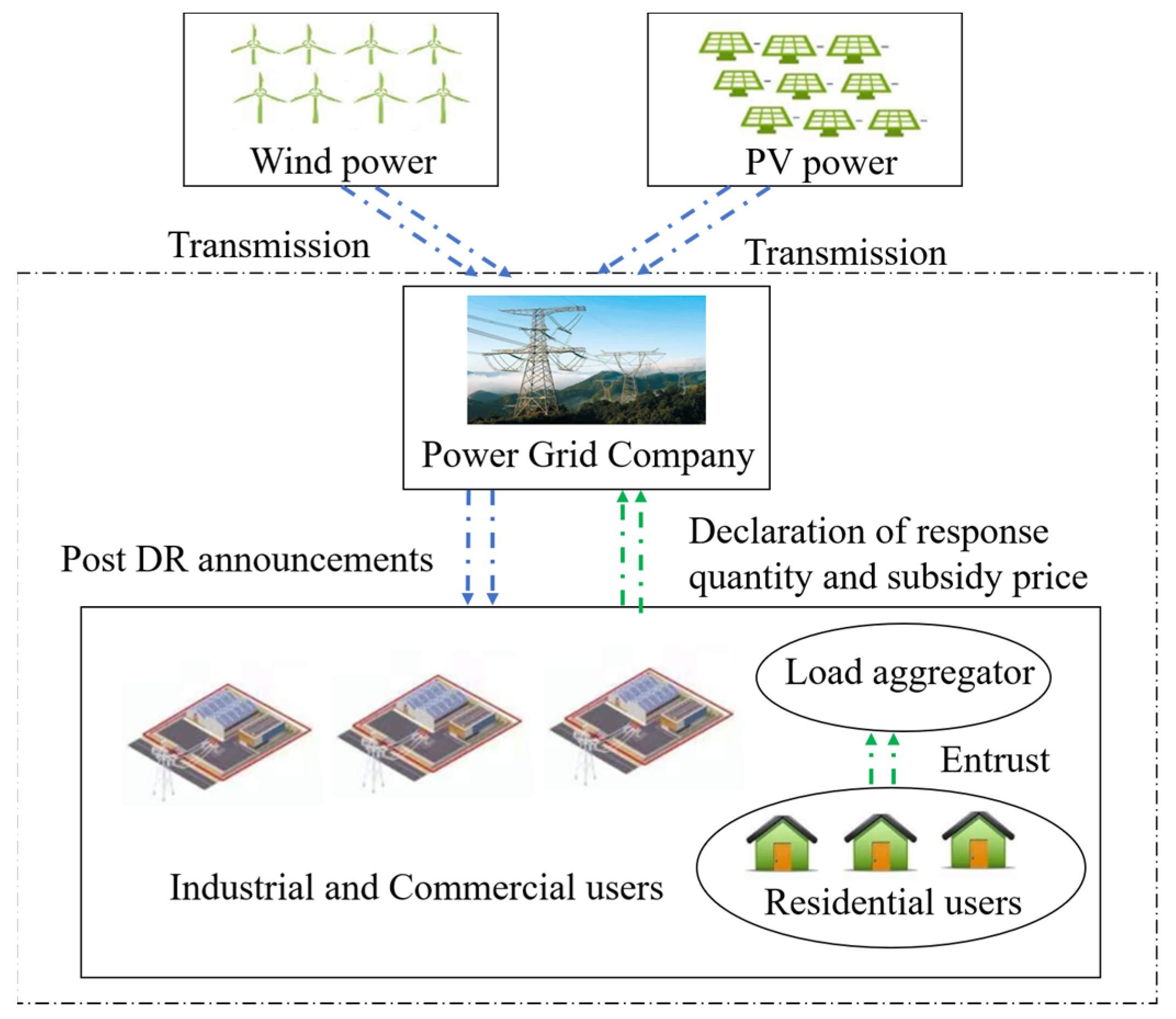
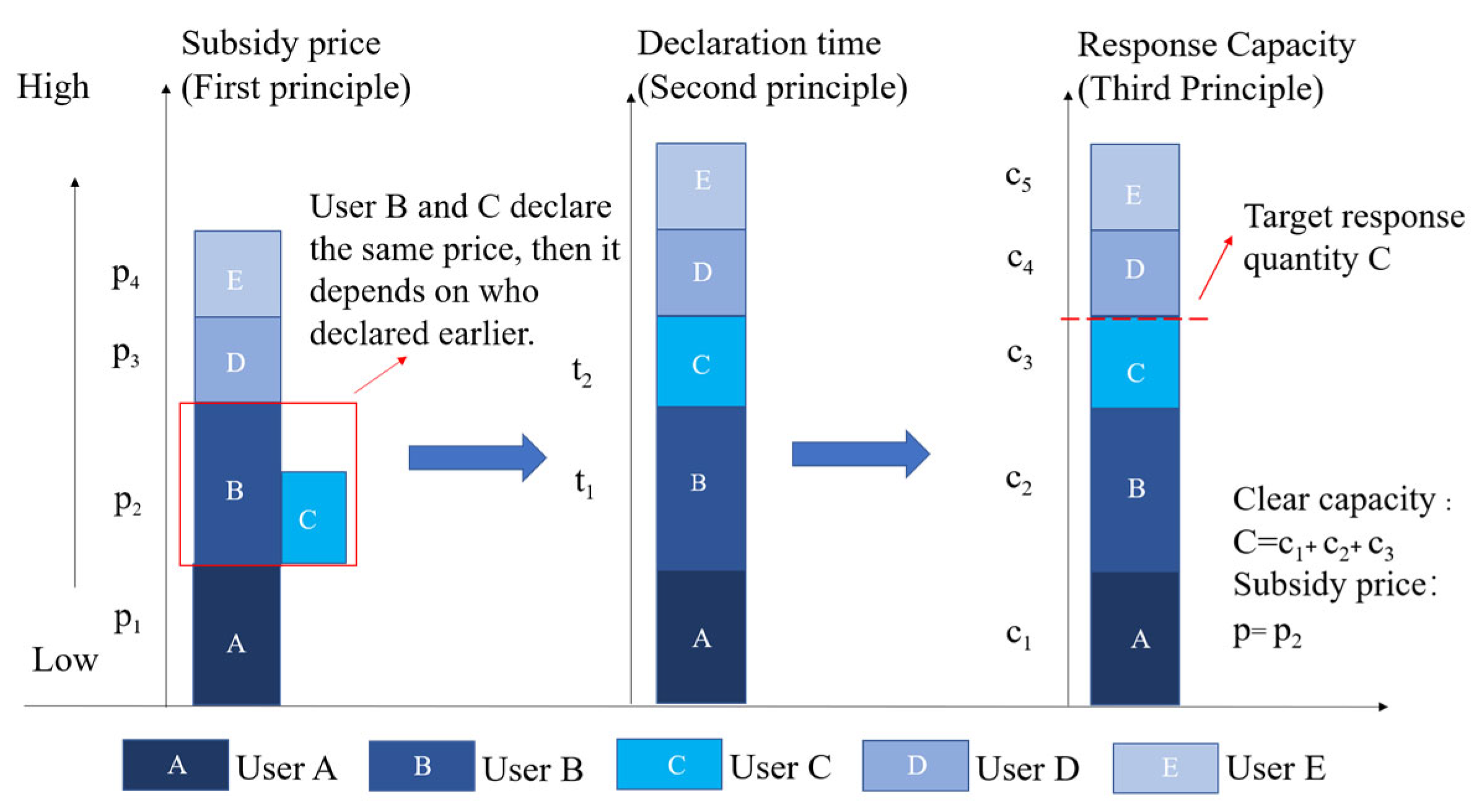
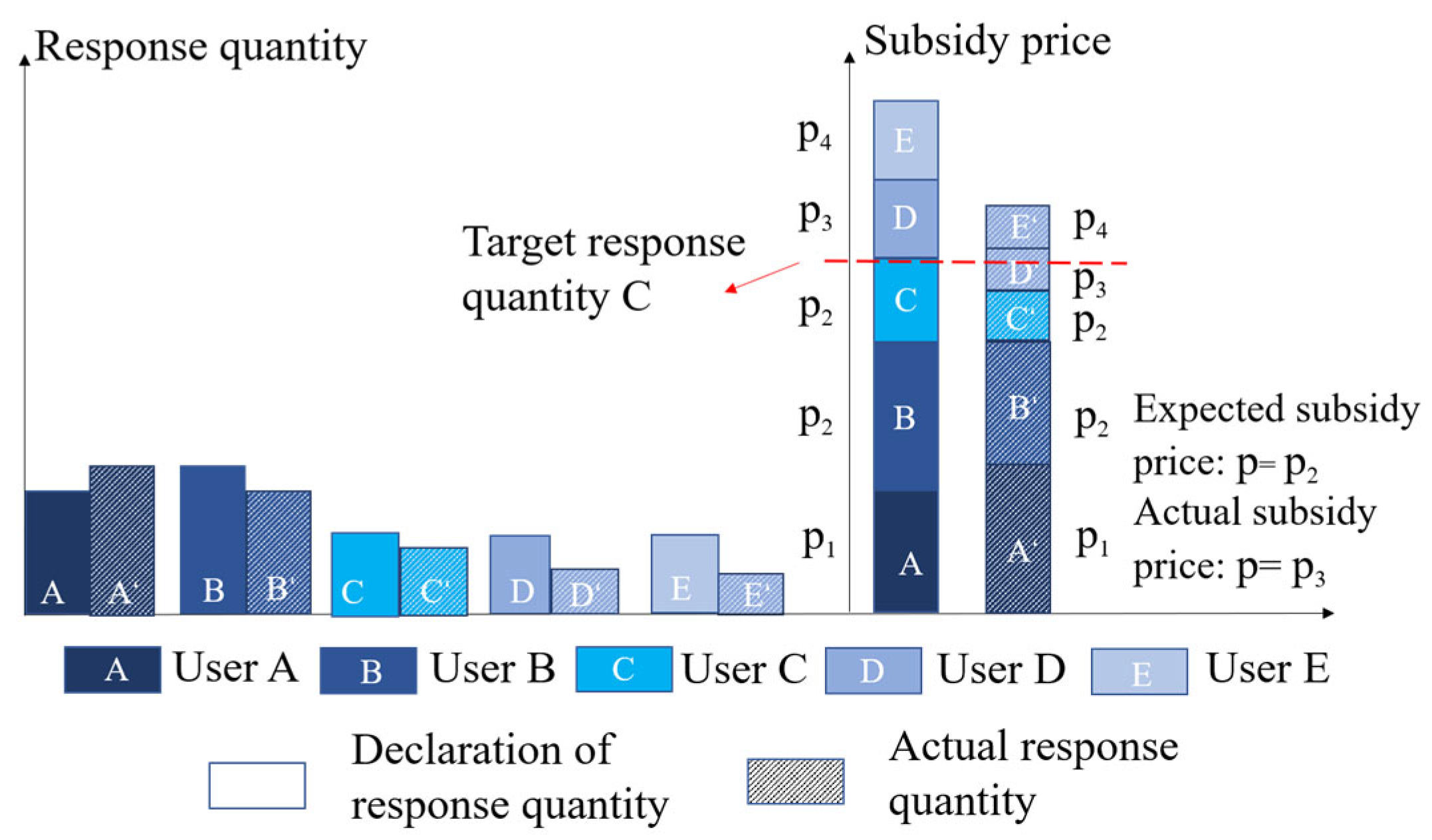

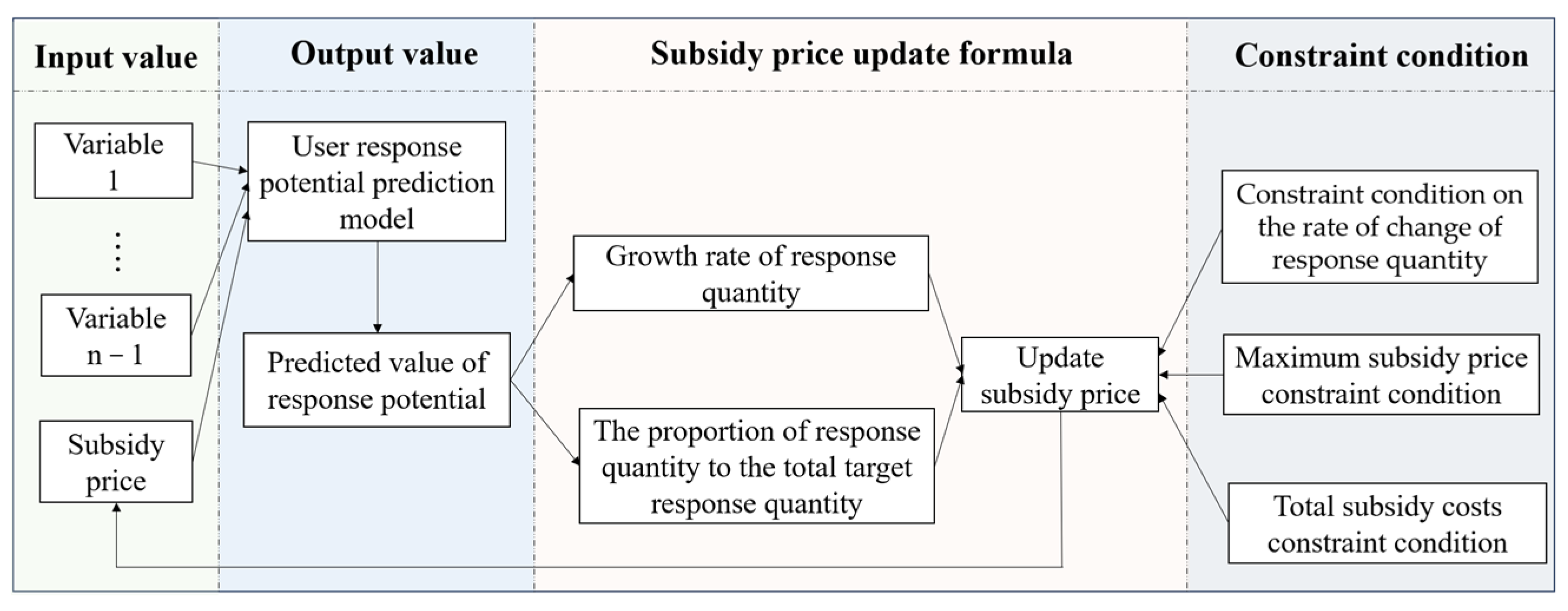
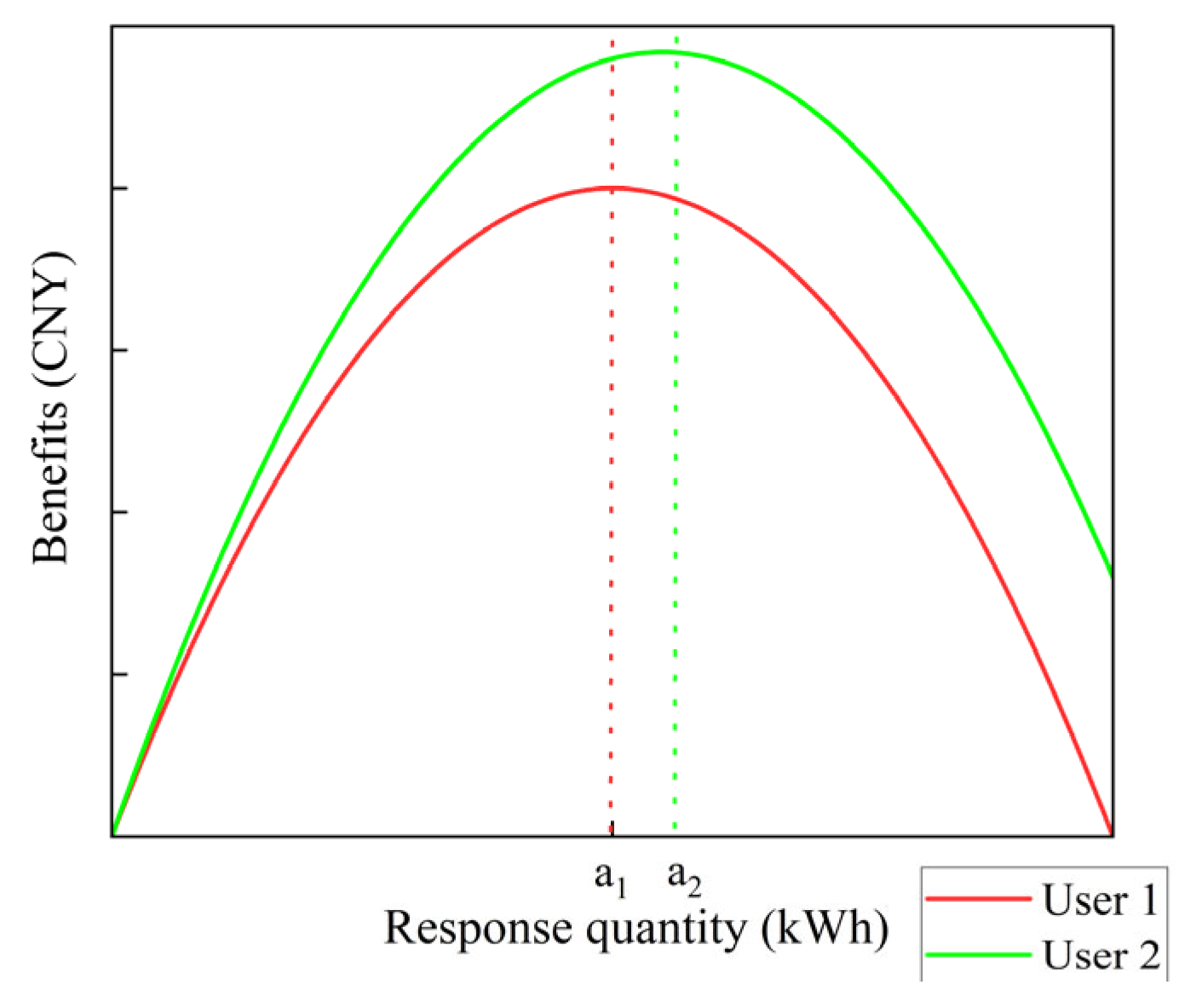
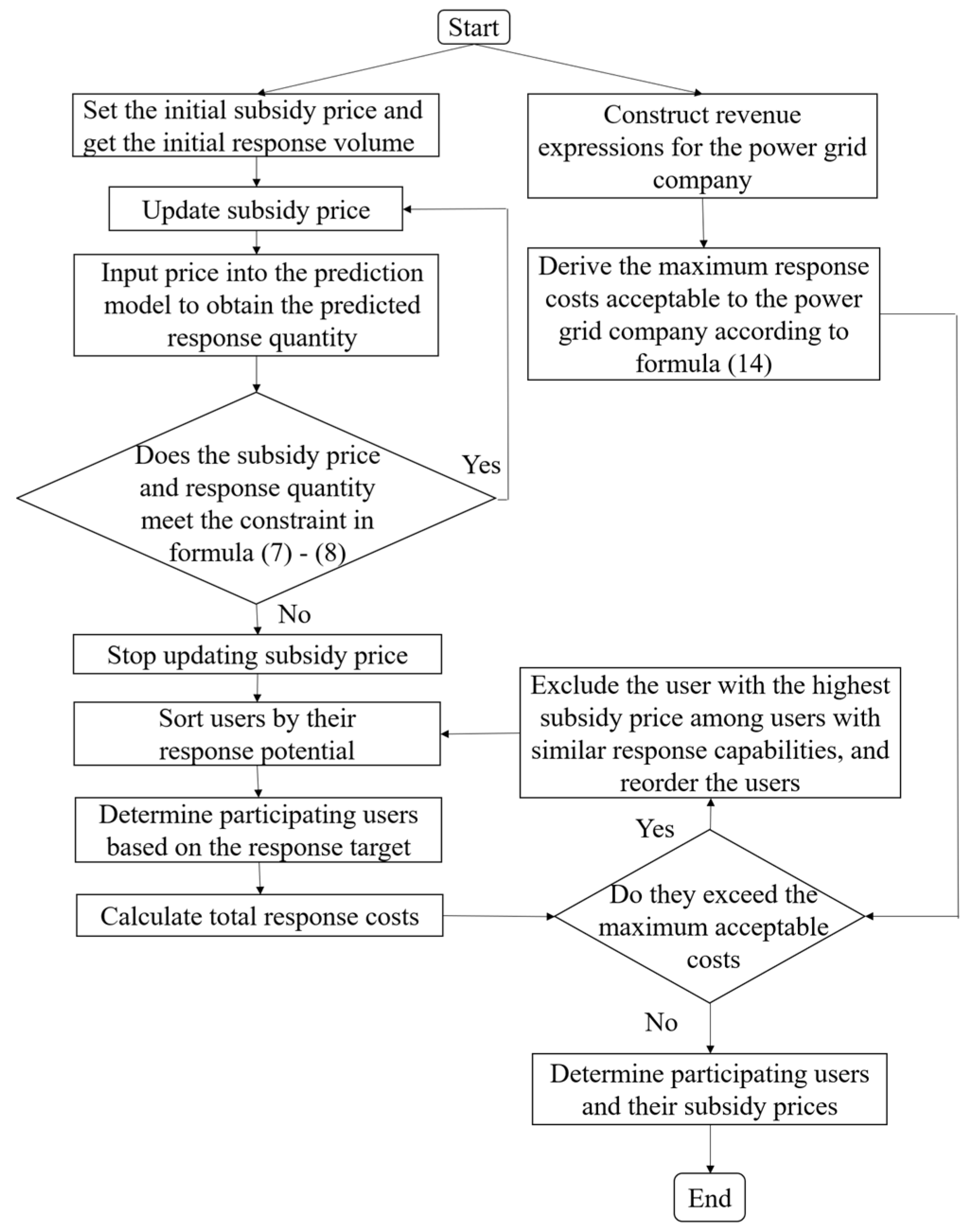

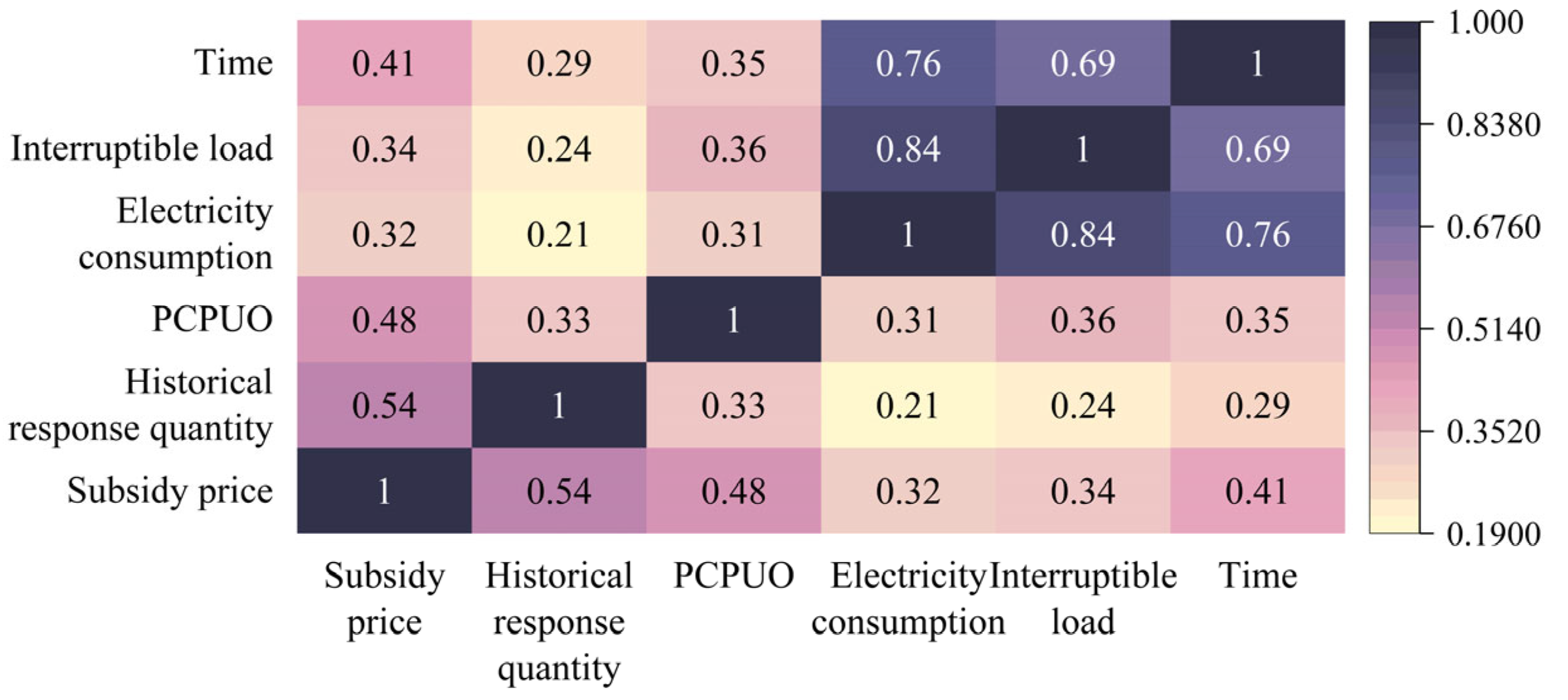
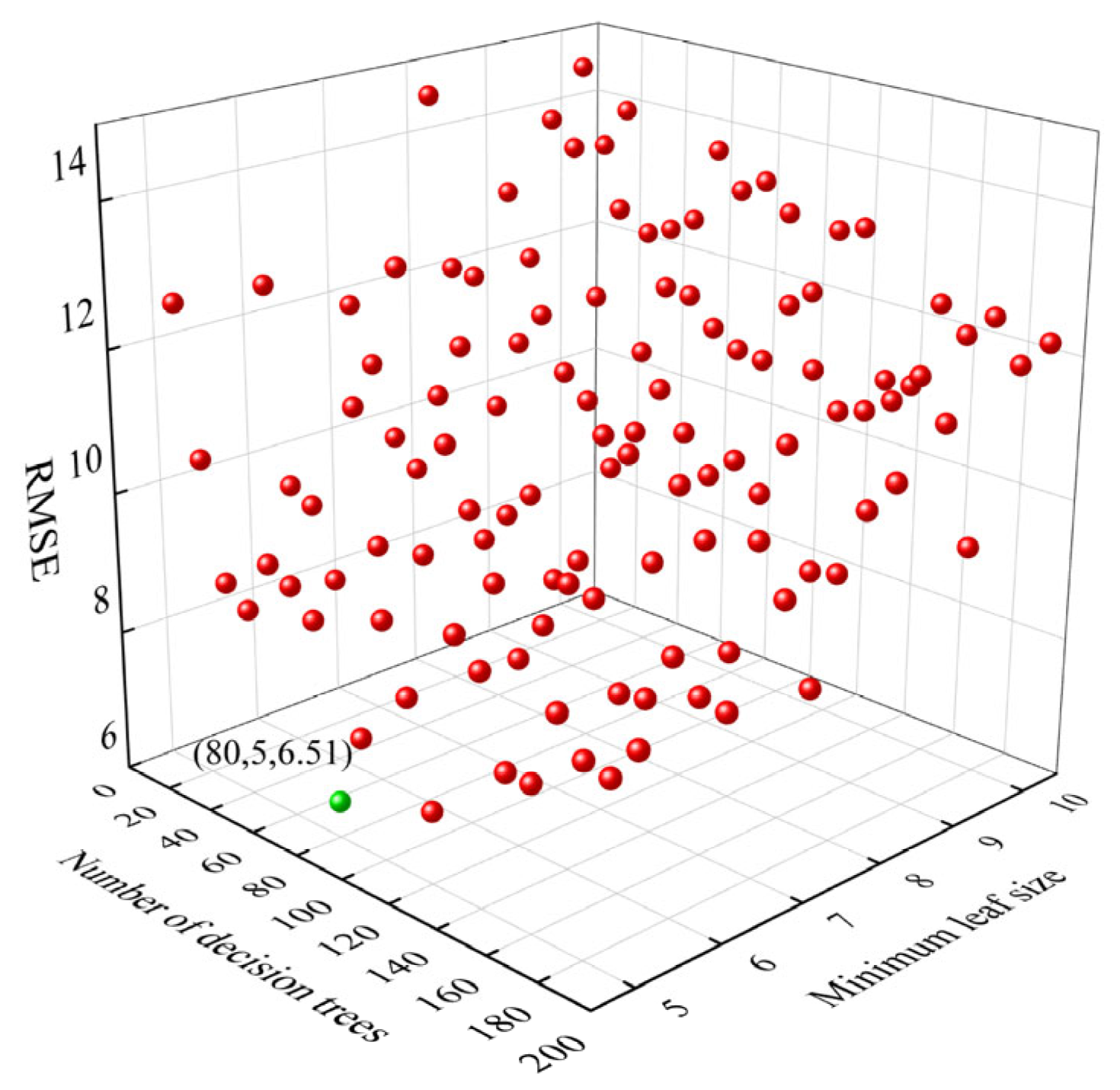
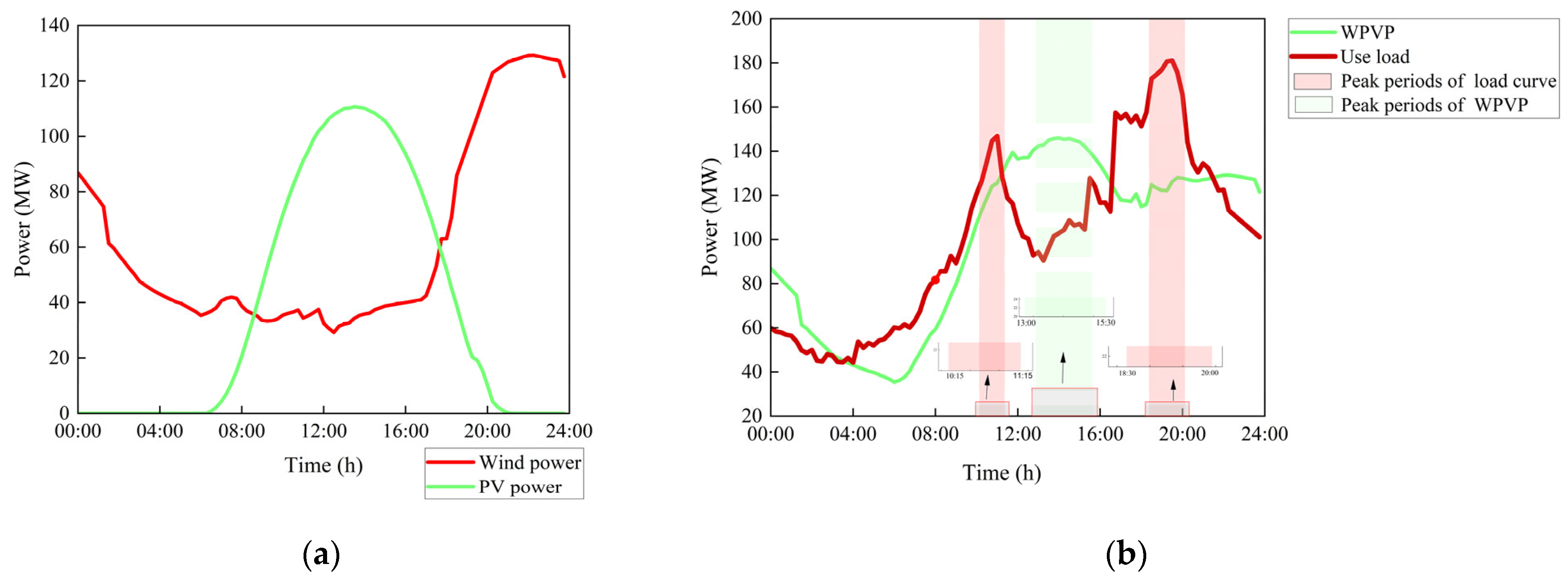

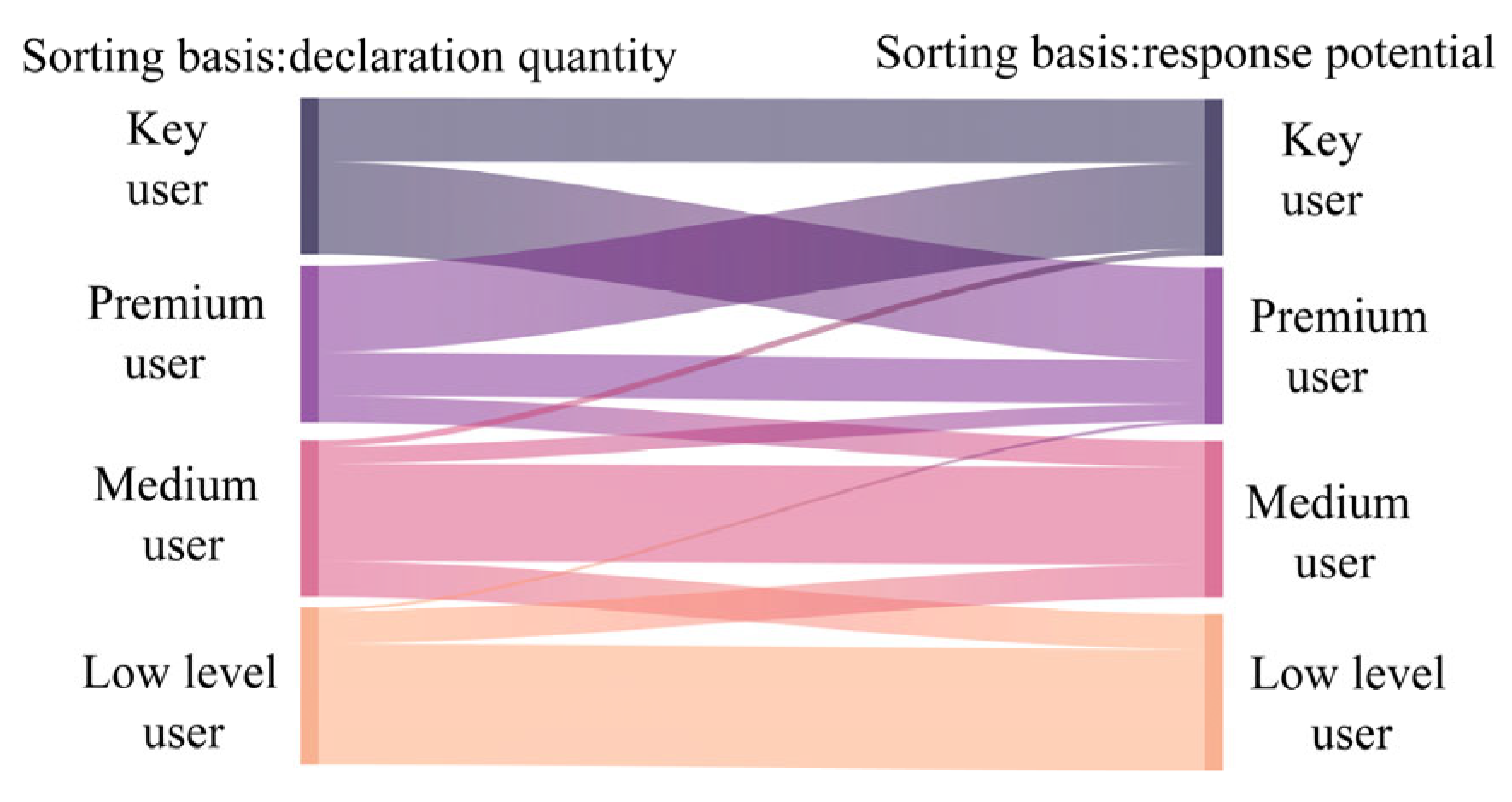
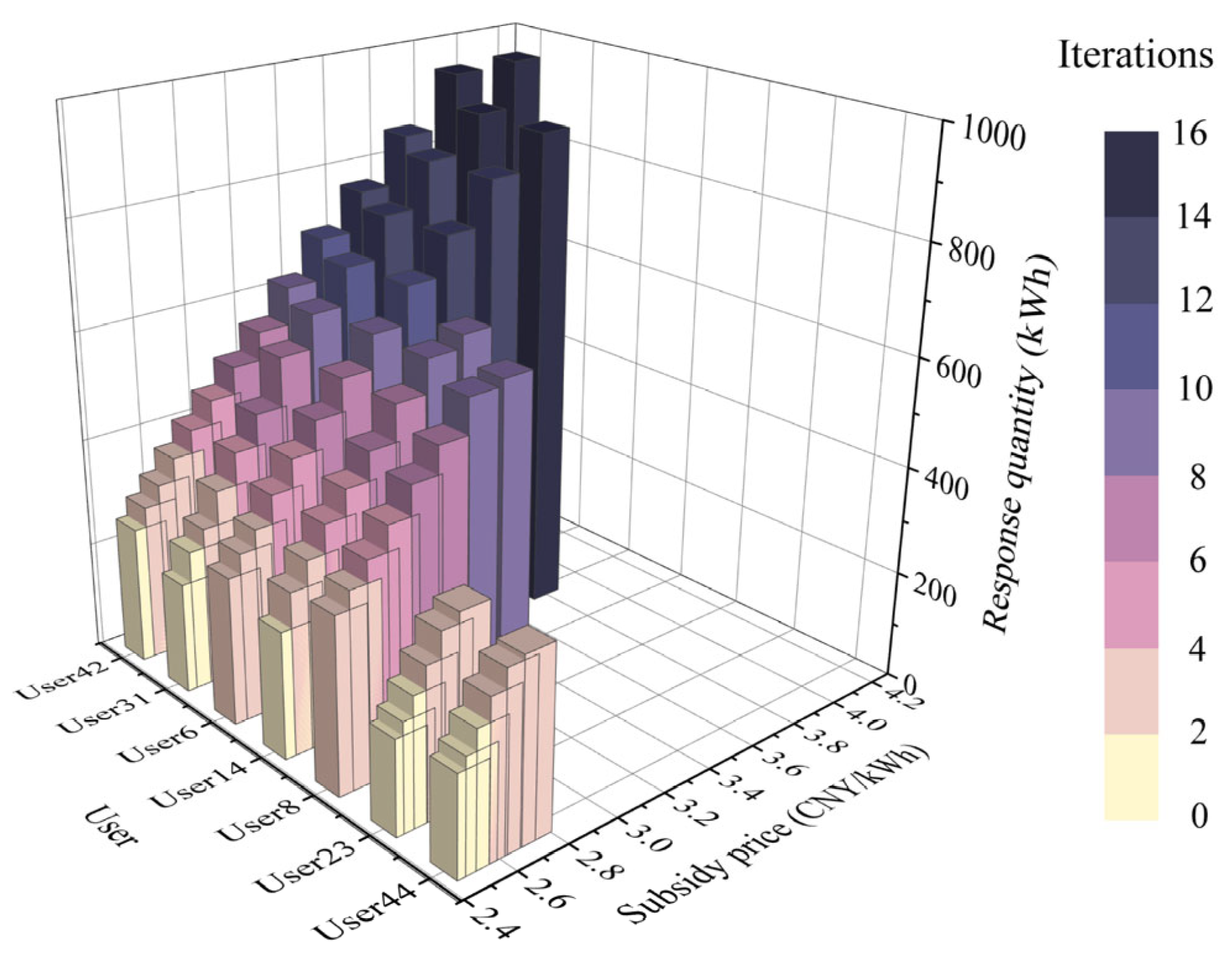
| Literature | CV | High Frequency CV |
|---|---|---|
| Shi R. et al. [25] |
|
|
| Shirsat A. et al. [27] |
| |
| Kong X. et al. [26] |
| |
| Zhang Y. et al. [29] |
| |
| Kong X. et al. [28] |
| |
| Wohlfarth K. et al. [37] |
|
| Indicator | Physical Meaning | Direction |
|---|---|---|
| EUR | Reflecting the rate of WPVP consumption | Forward direction |
| NLSD | Reflect discrete trends in the net load curve | Negative direction |
| PVD | Reflect the range of net load curve spans | Negative direction |
| Parameter | Symbol | Numerical Value |
|---|---|---|
| Initial subsidy price | 2.5 CNY/kWh | |
| Maximum subsidy price | 4.5 CNY/kWh | |
| Correction factor | 2 | |
| Growth rate threshold | 0.1 | |
| Losses from WPVP penalty costs factor | 1.75 CNY/kWh | |
| Thermal power unit climbing costs coefficient | 1.4 CNY/kWh |
| Ranking | User | Response Quantity (MWh) | Accumulated Response Quantity (MWh) |
|---|---|---|---|
| 1 | User 42 | 0.955 | 0.955 |
| 2 | User 31 | 0.914 | 1.869 |
| 3 | User 6 | 0.905 | 2.774 |
| 4 | User 282 | 0.891 | 3.665 |
| …… | …… | …… | …… |
| 141 | User 221 | 0.296 | 79.226 |
| 142 | User 352 | 0.292 | 79.518 |
| 143 | User 367 | 0.288 | 79.806 |
| 144 | User 210 | 0.284 | 80.090 |
| 145 | User 320 | 0.282 | 80.372 |
| 146 | User 224 | 0.281 | 80.653 |
| …… | …… | …… | …… |
| Indicator | Before DR | After DR | Difference | Direction |
|---|---|---|---|---|
| EUR | 81.17% | 92.84% | 11.67% | Forward direction |
| NLSD | 27.01 | 24.32 | −2.68 | Negative direction |
| PVD | 110.81 | 84.15 | −26.66 | Negative direction |
| Differentiated Price Strategy | Fixed Price Strategy | Subsidy Costs Difference (CNY) | |||||
|---|---|---|---|---|---|---|---|
| User | Response Quantity (kWh) | Subsidy Price (CNY/kWh) | Subsidy Costs (CNY) | Response Quantity (kWh) | Subsidy Price (CNY/kWh) | Subsidy Costs (CNY) | |
| User 44 | 334 | 2.745 | 917 | 341 | 3.500 | 1194 | −277 |
| User 23 | 346 | 2.740 | 948 | 348 | 3.500 | 1218 | −270 |
| User 8 | 624 | 3.145 | 1962 | 629 | 3.500 | 2202 | −240 |
| User 14 | 648 | 3.219 | 2086 | 649 | 3.500 | 2271 | −185 |
| User 6 | 905 | 3.799 | 3438 | 824 | 3.500 | 2884 | 554 |
| User 31 | 914 | 3.760 | 3436 | 831 | 3.500 | 2909 | 527 |
| User 42 | 955 | 4.166 | 3978 | 784 | 3.500 | 2744 | 1234 |
Disclaimer/Publisher’s Note: The statements, opinions and data contained in all publications are solely those of the individual author(s) and contributor(s) and not of MDPI and/or the editor(s). MDPI and/or the editor(s) disclaim responsibility for any injury to people or property resulting from any ideas, methods, instructions or products referred to in the content. |
© 2024 by the authors. Licensee MDPI, Basel, Switzerland. This article is an open access article distributed under the terms and conditions of the Creative Commons Attribution (CC BY) license (https://creativecommons.org/licenses/by/4.0/).
Share and Cite
Zhao, W.; Wu, Z.; Zhou, B.; Gao, J. Wind and PV Power Consumption Strategy Based on Demand Response: A Model for Assessing User Response Potential Considering Differentiated Incentives. Sustainability 2024, 16, 3248. https://doi.org/10.3390/su16083248
Zhao W, Wu Z, Zhou B, Gao J. Wind and PV Power Consumption Strategy Based on Demand Response: A Model for Assessing User Response Potential Considering Differentiated Incentives. Sustainability. 2024; 16(8):3248. https://doi.org/10.3390/su16083248
Chicago/Turabian StyleZhao, Wenhui, Zilin Wu, Bo Zhou, and Jiaoqian Gao. 2024. "Wind and PV Power Consumption Strategy Based on Demand Response: A Model for Assessing User Response Potential Considering Differentiated Incentives" Sustainability 16, no. 8: 3248. https://doi.org/10.3390/su16083248






